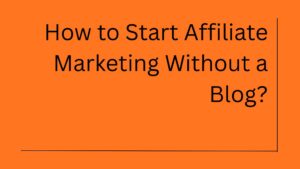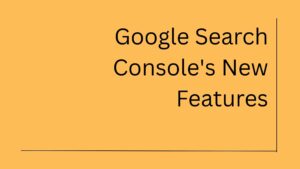So half the marketing tactics people were hyping ten years ago feel embarrassing today. Forced scarcity, fake countdown timers, and stacking a mountain of “bonuses” that nobody asked for. That playbook is dead.
What’s replacing it? Simple: honesty, connection, and showing up like a real human.
The shift isn’t just happening because we got tired of sleazy tactics. It’s happening because the marketplace fundamentally changed. Social media algorithms now prioritize authentic engagement over manufactured virality. Consumers have developed sophisticated BS detectors after years of being oversold and under-delivered. And frankly, the barrier to entry for starting a business online has never been lower, which means standing out requires something more than just following the same template everyone else downloaded.
The businesses that are thriving right now aren’t the ones with the slickest funnels or the most “optimized” landing pages. They’re the ones that feel real. They’re run by people who talk like humans, solve actual problems, and build genuine relationships with their audience. They’re not trying to “hack” their way to success; they’re earning it through consistency, competence, and character.
If you’re a freelancer, service provider, or running a small business, here are five shifts that typically mean the trends that actually matter right now in digital marketing.
Latest And Emerging Digital Marketing Trends To Learn and Adopt
1. Context Beats Content
Content isn’t rare anymore. Everyone and their neighbor can spin up 20 blog posts in an afternoon using AI. So just pumping out “more stuff” doesn’t make you stand out.
The real currency now? Context.
Think about it: AI doesn’t have your taste, your perspective, or your lived experience. It can’t tell me why a campaign flopped even though the numbers looked good on paper. It can’t share what it felt like when a client ghosted after promising a big contract. But you can.
People don’t want more information, they want insight. They want to know how you see the world and why that matters.
Here’s a quick test: if your content could just as easily be written by ChatGPT and nobody would notice, it’s probably not context-rich.
Instead, lean on “show, don’t tell” marketing. Share real results, case studies, and lessons from your own mistakes. Something as simple as walking through your A/B testing data from last month could turn into your best-performing piece of content, because it’s yours.
Context is your competitive moat. While everyone else is racing to produce more generic content, you can own a specific perspective. Maybe you’re the freelancer who only works with sustainable brands, or the consultant who’s helped 50 SaaS startups navigate their first funding round. That specialized lens with that unique angle is what makes people stop scrolling.
Start documenting your decision-making process. When you choose one strategy over another, explain why. When something works unexpectedly well, break down the factors that made it succeed. When you pivot mid-project, share the reasoning. This isn’t just storytelling, it’s strategic transparency that builds authority. Your context becomes your content moat, and that’s something AI can never replicate, no matter how sophisticated it gets.
2. The Messenger Matters More Than the Marketing Message
Messages are copyable. Anyone can steal your words, tweak them, and repost. But what they can’t duplicate is you.
That’s why personal branding isn’t optional anymore. Not because you want to be Instagram-famous or rack up followers, but because people buy from people.
Now, personal branding doesn’t mean you need to post 10 times a day or film a TED Talk. It just means showing your face and proving you’re real. A simple behind-the-scenes story. A quick LinkedIn post with your actual opinion, not recycled advice. Even just updating your website so it doesn’t feel faceless.
If you’re building a business online, you don’t get to hide. The messenger, your voice, your presence, is the trust factor people are scanning for before they ever click “buy.”
Your personality is your differentiator. Two consultants might offer identical services, but one shares their morning coffee routine, talks about their failures openly, and responds to comments with genuine curiosity. That consultant wins every time, because humans connect with humans, not corporate facades.
This doesn’t require perfection; it requires presence. Share your workspace setup, your biggest professional mistake this month, or why you chose your niche. Record a 30-second voice note instead of typing a long email. Use your real photo, not a logo. The goal isn’t to overshare; it’s to prove you exist as a real person with real experiences.
People are tired of polished, sanitized business communication. They want to know who they’re actually working with, what you stand for, and whether you’ll be the same person in month six as you were during the sales call.
3. Actual Conversations > Endless Marketing Automation
Automation is great. Nobody wants to manually send every confirmation email or upload every lead magnet. But here’s the danger: when you over-automate, you kill trust.
Think about the last time you got stuck chatting with an AI bot that couldn’t understand what you were asking. Did you stay around and try to fix it? Probably not. You just left.
That’s the risk of replacing every single human touchpoint with a script or a robot.
The fix? Use automation where it makes things smoother, but still carve out space for real conversations. A single voice note, a quick DM reply, or a short personalized email can close a $10,000 deal faster than the most sophisticated funnel.
People aren’t craving “efficiency.” They’re craving to be heard.
Smart automation supports human connection; it doesn’t replace it. Automate the admin work: scheduling, follow-ups, and file delivery. But when someone asks a question, responds to your content, or shows genuine interest in working together, that’s when you step in personally.
The magic happens in the margins. A two-minute Loom video explaining why their project excites you. A voice message addressing their specific concern instead of sending a templated response. A quick phone call to walk through their questions before they sign a contract. These moments can’t be automated, and they’re exactly what separates you from competitors hiding behind chatbots.
Track where human touchpoints matter most in your process. Maybe it’s the initial consultation, the project kickoff, or troubleshooting mid-way through. Protect those moments fiercely. When prospects feel heard and understood by an actual human, price objections often disappear entirely.
4. Time-Saving > Value-Stacking
Remember the days when course creators bragged about $15,000 worth of bonuses bundled into a $297 product? Yeah, no one wants that anymore.
Because more content doesn’t equal more value. For most of us, it’s the opposite. We’re drowning in tabs, podcasts, PDFs, Slack messages, and unread newsletters.
The real win is helping people save time.
So instead of padding your offers with hours of extra training, think:
Can I give them a template instead of a 10-part workshop?
Can I share swipe files instead of another 2-hour video?
Can I do one focused coaching call that replaces weeks of trial and error?
People don’t want more homework. They want shortcuts that still get results.
Curation beats creation every single time. Your clients don’t need another comprehensive course; they need you to filter out the noise and show them exactly what works. Think like a skilled editor: what can you remove, simplify, or streamline?
This shift changes everything about how you package your expertise. Instead of creating a 12-module program, create a 90-minute intensive that solves their most urgent problem. Instead of weekly check-ins, offer on-demand Slack support for quick questions. Instead of comprehensive guides, provide decision trees that help them choose the right path quickly.
The businesses winning right now are those that respect their clients’ time constraints. They’re offering “done-for-you” solutions, rapid-fire troubleshooting sessions, and plug-and-play systems. When you position yourself as the person who cuts through complexity rather than adding to it, you become invaluable. Time is the scarcest resource your clients have; help them protect it, and they’ll pay premium prices for that efficiency.
5. Trust Is the Only Currency That Matters
Here’s the big one.
Marketing has always been about trust, but right now we’re in a full-blown trust crisis. And you can feel it. Customers are skeptical of ads, skeptical of leaders, skeptical of businesses in general.
Numbers back it up, too. The Edelman Trust Barometer has been tracking this for years, and trust in businesses is scraping historic lows. Most people assume leaders are lying to them. And AI, ironically, has made that worse. When consumers can’t tell if content is written by a person or a bot, their guard goes up.
So what do you do? Double down on being human.
Write your own content (or at least edit it so it sounds like you).
Be transparent about who’s behind the account. If it’s your team writing, don’t sign off as “you.”
Stop faking urgency, stop using scarcity tricks, stop over-promising.
Trust isn’t flashy. It’s built in the boring details: showing up consistently, delivering what you said you would, and treating people like actual humans instead of clicks.
Trust compounds slowly, breaks instantly, and rebuilds even slower. Every interaction either deposits or withdraws from your trust account. The small stuff matters: responding when you say you will, admitting when you don’t know something, sharing client results honestly (including what didn’t work), and being upfront about your limitations.
Start building trust infrastructure: client testimonials with specific results, case studies that include challenges and failures, transparent pricing with no hidden fees, and clear communication about what success actually looks like. When you mess up and you will address it directly and fix it fast.
The most successful businesses in this environment are those that feel like trusted advisors rather than vendors. They’re the ones prospects call when they have questions, even if they haven’t signed a contract yet. They’re the ones clients refer without being asked, because working with them felt genuinely different. Trust takes longer to build than flashy marketing tactics, but it’s the only competitive advantage that actually gets stronger over time.
Wrapping It Up
The playbook has changed. Funnels, hacks, manipulative tactics, they’re not just outdated, they’re toxic to trust.
The businesses winning in the coming years are the ones that:
Share context, not just content
Lean on the messenger, not just the message
Balance automation with real conversations
Save people time instead of overwhelming them
And above all, build trust with every single touchpoint
That’s it. No hacks, no tricks. Just marketing that feels like something people actually want to engage with.
Because at the end of the day, people aren’t craving more “content.” They’re craving connection.

The Chief Author and Editor at Intothecommerce. As a seasoned expert in digital marketing, I direct the site’s strategic content and ensure every piece meets the highest industry standards. My insights drive our coverage on SEO, paid media, and cutting-edge marketing technology.






1 thought on “Top 5 Recent Digital Marketing Trends You Must Watch and Know”
Hey Parker, here. I believe there are still many more trends running in the space, and you have more to cover, but what has been posted is done well. Good job.